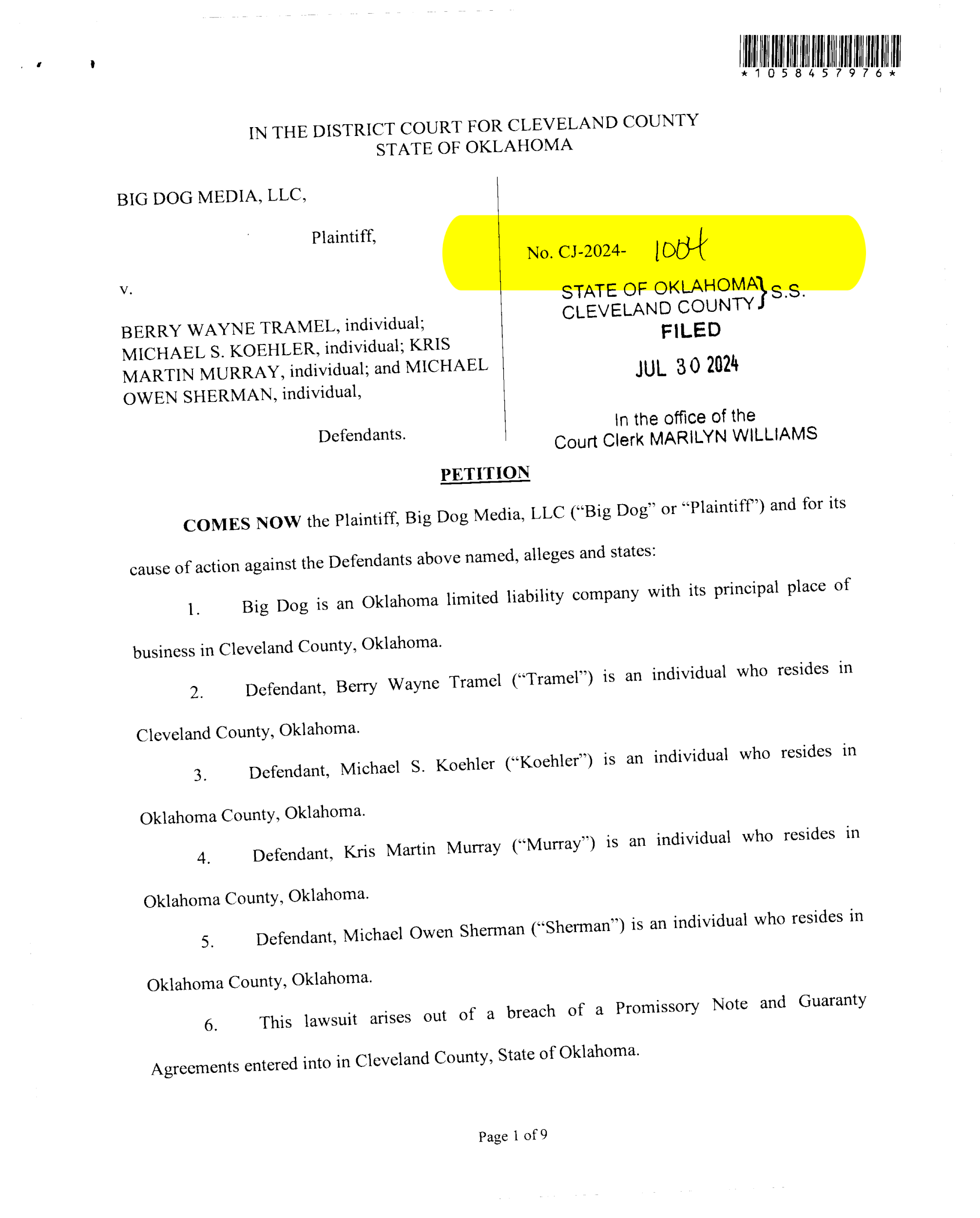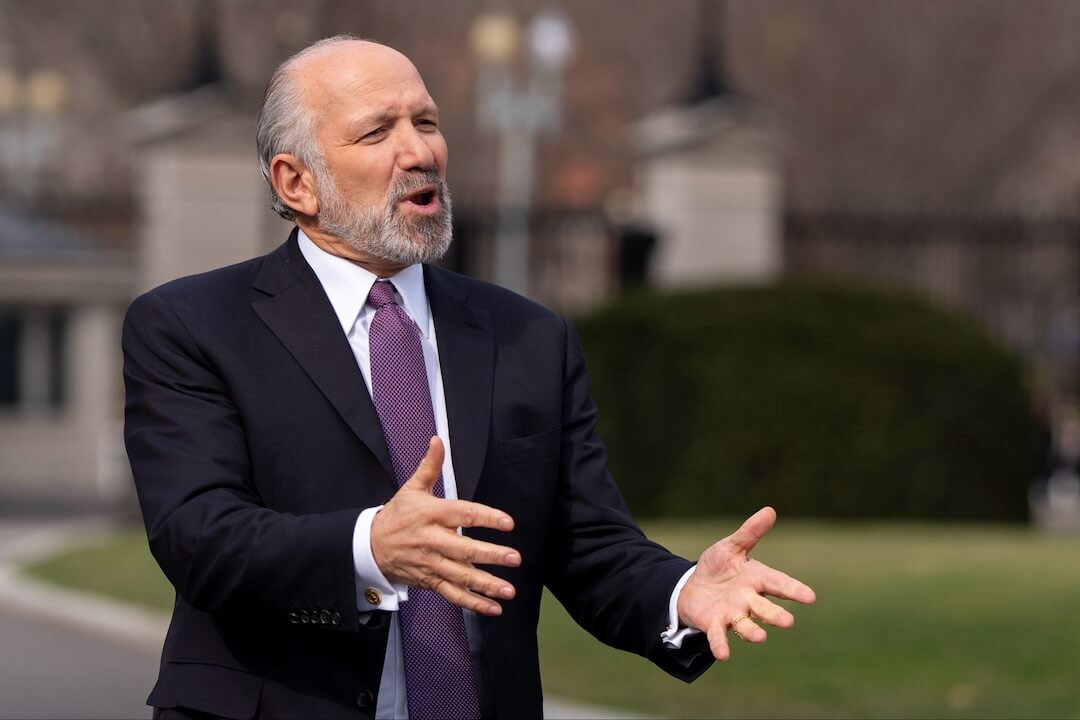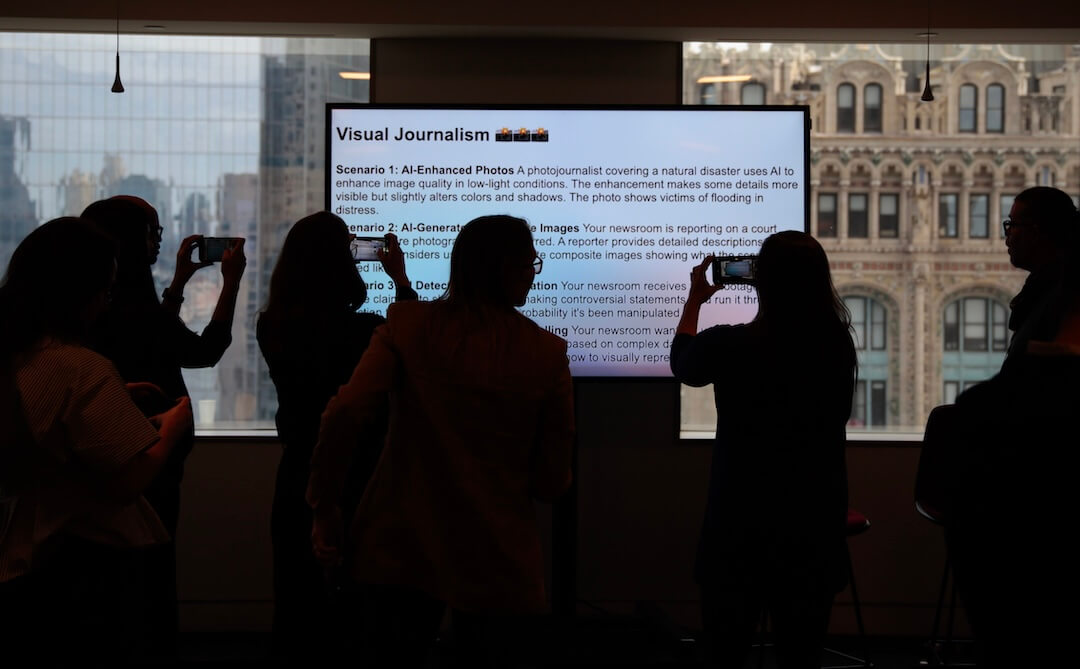The promise of hope came through the endorphin-boosting rush of modern-day correspondence — Twitter direct message, Facebook Messenger — with no hint of the pain and disappointment to come.
Sellout Crowd, that idea from above, would provide an online haven for his former colleagues — and Oklahoma’s premier sports media members — through short videos, podcasts and vibrant journalism, courtesy of high-profile benefactors. It was the brainchild of Mike Koehler, a former Oklahoman editor turned marketing entrepreneur, who would bestow the unimaginable to journalists: a comfortably middle-class life without endless toil.
Talented young writers wouldn’t have to spend their precocious prose on high school wrestling. Beloved veterans wouldn’t have to plumb their souls for late-career pep talks. For many who joined the enterprise, there was more money than they had ever seen. At age 41, Todd Lisenbee, a sports radio veteran in Oklahoma, could finally take his dad out for lunch. The lavish launch party in October 2023 featured a golf simulator and plenty of eats and drinks in the multi-floor rustic chic of The Joinery.
In reality, “we were building a plane in mid-air,” said Michael Lane, Sellout Crowd’s creative director.
Sellout Crowd crashed in May 2024, eight months after its launch. It had sputtered into a tailspin well before then, billowing money.
More than half of the site’s regular contributors had already been laid off in early March.
Two friends Koehler had sought to save from the crush of journalism’s perpetual landslide, former Oklahoman sports columnist Berry Tramel and sports editor Mike Sherman, discovered they were on the hook for a $1.5 million loan. (They now could face personal bankruptcy.)
Vendors and Sellout Crowd staffers were owed hundreds of thousands of dollars.
Koehler faded away from his friends and employees like an unanswered prayer while hard-driving survivors kept Sellout Crowd viable for investors who never arrived.
Dreams were delayed; careers disrupted.
Another, less obvious tragedy occurred, thought Guerin Emig, a columnist at Sellout Crowd and formerly with the Tulsa World.
Sellout Crowd needed to succeed in an industry bereft of good news. Media folk were rooting for Koehler’s crew. Everything was in place — the market, the talent, the content. Sellout Crowd “should have been a beacon” in an endangered business that its participants not only consider vastly important, but deeply love.
“For any go at that to be sabotaged like it was with Sellout Crowd,” Emig said, “is just horrible.”
‘Now what can I do next?’
Tramel preferred to hire writers from small papers. He knew the hard work required to succeed at one. Tramel had spent 13 years at The Norman Transcript — he started at age 17 in 1978 — before becoming the sports editor and star columnist at The Oklahoman. In 2000, he hired Koehler from the Muskogee Phoenix, from the eastern part of the state. Koehler, like Tramel, got right to it, covering his first ball game days after his 16th birthday. His dad was a newspaperman in Missouri.
As The Oklahoman’s deputy sports editor, Koehler did not evoke comparisons to Sports Illustrated’s André Laguerre or Inside Sports’ John Walsh, leaders who turned outlets into revered institutions. “I always felt I had a better handle on my beat and how to do it and how to plan it than Mike could grasp,” said former Oklahoman sports reporter John Helsley. Koehler’s attention to detail was lacking, Tramel said, and it landed him in trouble.
In 2003, Oklahoma State University football faced Nebraska in its season opener, a rip-roaring Big 12 showdown. A team of reporters was on its way to Lincoln, when —
Riiiinnnng …
“Hey, we don’t have credentials.”
That season ended with OSU in the Cotton Bowl against Ole Miss, led by superstar senior quarterback Eli Manning. Here was another test in coach Les Miles’ quest to —
Riiiinnnng …
“Hey, we don’t have credentials! We can’t get in!” Koehler had dropped the ball again.
Sherman became the sports editor in 2003. Per his management style, he put Koehler in situations where he could succeed. He excelled at big-picture stuff, story ideas and headlines. And the internet. Sellout Crowd consultant Jay Spear, who worked at The Oklahoman with Koehler, remembered him embracing social media as a way to connect with readers. Koehler was less of a technologist, Spear said, and more of “a willing volunteer,” someone unafraid to try new things and break the rules of traditional journalism.
Koehler leveraged that curiosity into shaping The Oklahoman’s acclaimed website. He left in 2009, forming Smirk New Media, a successful multimedia digital and marketing firm, in 2010, according to his LinkedIn page. Among its clients was KampCo Foods, a franchisee that owns and operates Johnny Carino’s restaurants in Oklahoma and North Texas.

Sellout Crowd’s Jacquelyn Farris, Mike Koehler, and Mike Sherman (clockwise from left) meet with Smirk New Media president Allie Carrick (head of table, olive green shirt). (Photo: Jay Spear)
What should have been an exciting time was shrouded in pain, Koehler later told Adam Coury, who worked in sales for Sellout Crowd, on the latter’s “Backpack Theory Podcast.” The September 2023 episode’s topic: The danger of faking it until you make it. At Smirk, Koehler had foolishly subscribed to that maxim. He didn’t ask for help. He was not honest with people. The charade became poisonous. Koehler had contemplated suicide before seeking help.
Thanks to God, he had emerged as “a healthier person” who embraced self-forgiveness. “If He’s capable of seeing past all of my mistakes and all of the flaws,” Koehler explained, “… there’s no reason for me to keep track of all that stuff if God doesn’t keep track of it.”
Turning 50 had provided clarity. He had found a way to reenter sports journalism via altruism.
“How can I take where I am and continue to make it more about other people than it is about myself?” Koehler told Coury. “I’m making a good living. I’m in a good place. Now what can I do next?”
As Koehler thrived, The Oklahoman, where he had spent the best years of his career, stumbled. GateHouse Media, before it took over Gannett and its name, purchased the paper in September 2018. Immediately, 37 staffers lost their jobs.
“One of the most important things I stressed to the staff,” then GateHouse CEO Kirk Davis told Poynter at the time, “… that we need to do quickly is stabilize the financial situation at the newspaper.”
With Sellout Crowd, Koehler could provide alms for his journalist friends. He singled out Sherman, “a great spiritual man of God, too,” who “changed the trajectory of my life, because I started thinking about things in sort of a business-like way.”
Not only that, Koehler learned he could be a “force for good in this industry.” Sellout Crowd would show love and appreciation for terrific journalists who were almost held in disdain by their own profession.
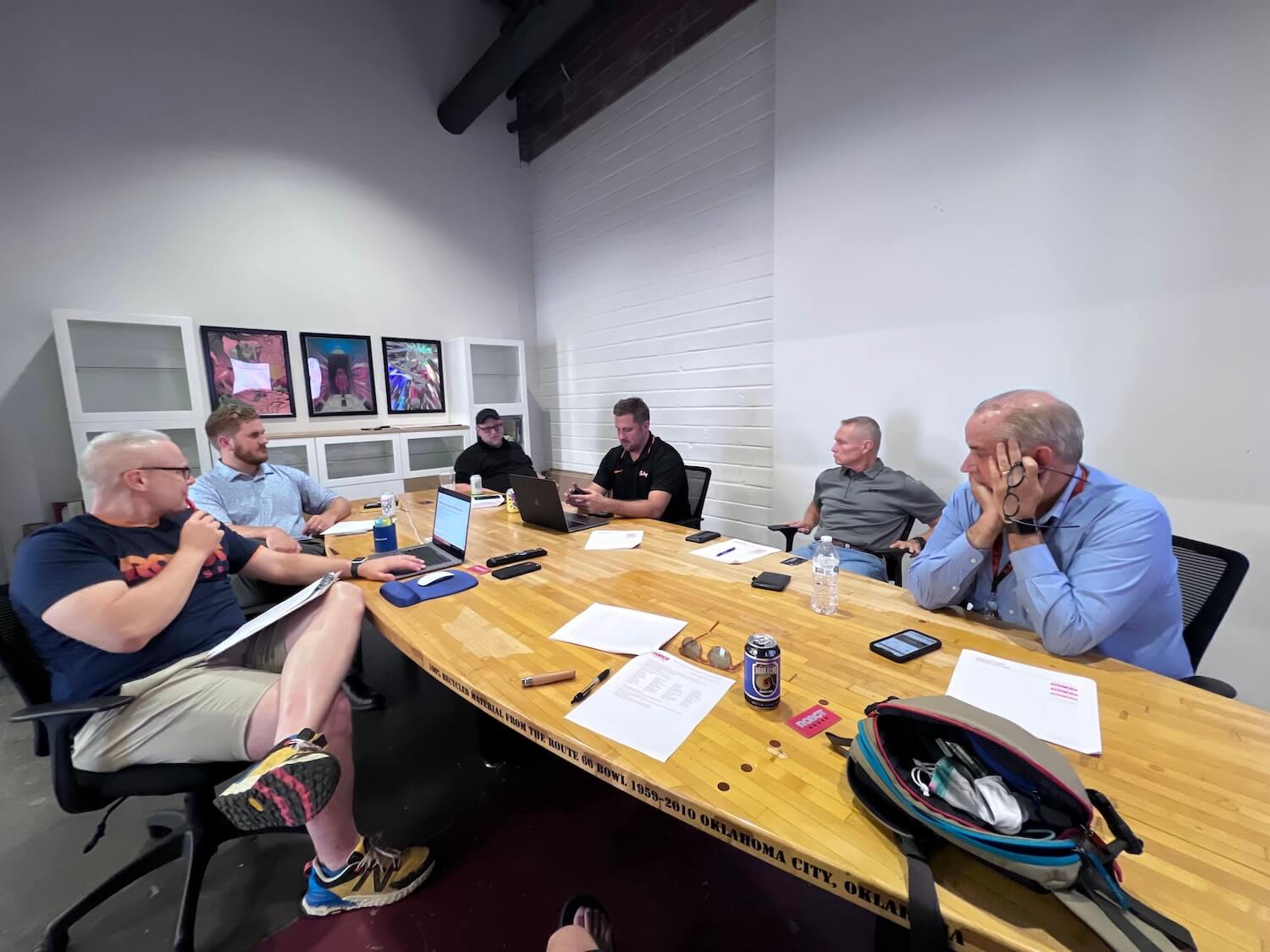
(From left) Brian Winkeler and Jennings Hammack of Robot House, which designed the Sellout Crowd logo, meet with SC’s Mike Koehler, Michael Lane, Jerry Wagner and Mike Sherman. (Photo: Jay Spear)
“It’s really about taking these people that I know and helping them make a better living and feel more worth for the great work that they do,” Koehler said.
Coury, who did not respond to interview requests from Poynter, practically swooned. “Dude, that is so cool.” He quickly found the moral. Because Koehler had relinquished his burdens, including ego and deceit, God had put him in a position to “uplift others through this vision.”
‘Boy, I have a huge opportunity possibly for you’
It was about saving his friends. So, of course, Koehler approached Sherman and Tramel, his former bosses at The Oklahoman, in 2020. The two friends and Jenni Carlson, another Oklahoman sports columnist, met Koehler for what-if coffee meetings. How could they reunite for a work opportunity?
As the idea for Sellout Crowd evolved on and off over three years, the temptation to join a sports journalism paradise grew.
For Tramel, the opportunity arrived at the right time. He turned 59 in 2020. He loved newspapers — he grew up reading four a day — and writing columns for The Oklahoman, but knew new media was the future. Sports columnists are endangered in today’s journalism landscape. Koehler offered something new and vibrant with zero corporate oversight. Tramel was a go when funding became available and if Carlson joined him. (Carlson, via text message, declined to be interviewed.)
By summer 2023, Koehler was pressing Sherman for his salary requirements. The opportunity to work with Tramel and Carlson greatly appealed to Sherman. That’s when The Oklahoman was all war, weather and college football. The three of them would hunker down for breakfast at an IHOP and discuss ideas for the paper’s sports section. Finally, a great gig came along without inconvenience. Sherman, like other weathered reporters, had scrambled to sustain his career: Tampa Bay, Nashville, Utica, New York. For the first time, a new job wouldn’t upend his life. In August, Sherman’s team and Koehler finalized how the site would work and identified its audience.
“We thought he had matured, that he was misunderstood,” said Tramel. Smirk was supposedly a sign of that growth. “We’ve since found out the business was not all that successful and whatever successes they had were the result of others,” claimed Tramel, who added that Koehler said as much.
Tramel’s decision to join Koehler’s nascent business served as benediction. The bard of Oklahoma sports leaving The Oklahoman was inconceivable to Emig. He called Tramel, who revealed he was likely to join Sellout Crowd. “That meant a lot more, honestly, than anything Mike Koehler said,” Emig recalled.
NBA salary cap expert Jon Hamm, another Sellout Crowd convert, figured Koehler was on the level. He wouldn’t screw over Tramel and Carlson, whom he had known for years. The proposal must be sound.
Tramel and Carlson, said Sam Hutchens, who ended up covering Oklahoma State University for Sellout Crowd, were the site’s “pole bearers of legitimacy.” If they were taking the risk, why hesitate? Especially with such an irresistible opportunity.
“It was pitched to all of us as: Go create your own brand,” Lisenbee, the sports radio veteran, said. “Do your thing, let your creativity shine through, and we’ll promote it and sell it for you.” Content creators would have their own websites. Plus, they’d get a commission of any sales revenue there, Emig said.
The talent Koehler courted craved stability, advancement — anything good. Brett Dawson, who had covered the Los Angeles Lakers for The Athletic, was working in communications. Oh, you won’t miss writing, other former journalists had said. Dawson did. A lot. And now someone who couldn’t believe he hadn’t been hired yet was offering a ton of money to do the job the way Dawson wanted.
Lisenbee wouldn’t have to eradicate his personal life to maybe make $50,000 a year with nonstop gigs. Emig was reevaluating his options after being laid off from the Tulsa World in December 2022.
“I didn’t have a lot to lose,” he said. “And I figured, if nothing else, I’d figure out whether I wanted to keep writing.”
Lane, Sellout Crowd’s eventual creative director, had texted Koehler, a former client, looking for leads. Minutes later came the response: “Boy, I have a huge opportunity possibly for you.”
Koehler promised three years’ salary upfront and asked talent to name their signing bonus. He responded to salary offers with the aggression of a skittish matador. $100,000 a year? Olé! In retrospect, “if I told him I wanted half a million dollars, he would have signed off on it,” Tramel said. (According to legal documents, Tramel claimed he signed a three-year, $600,000 deal.)
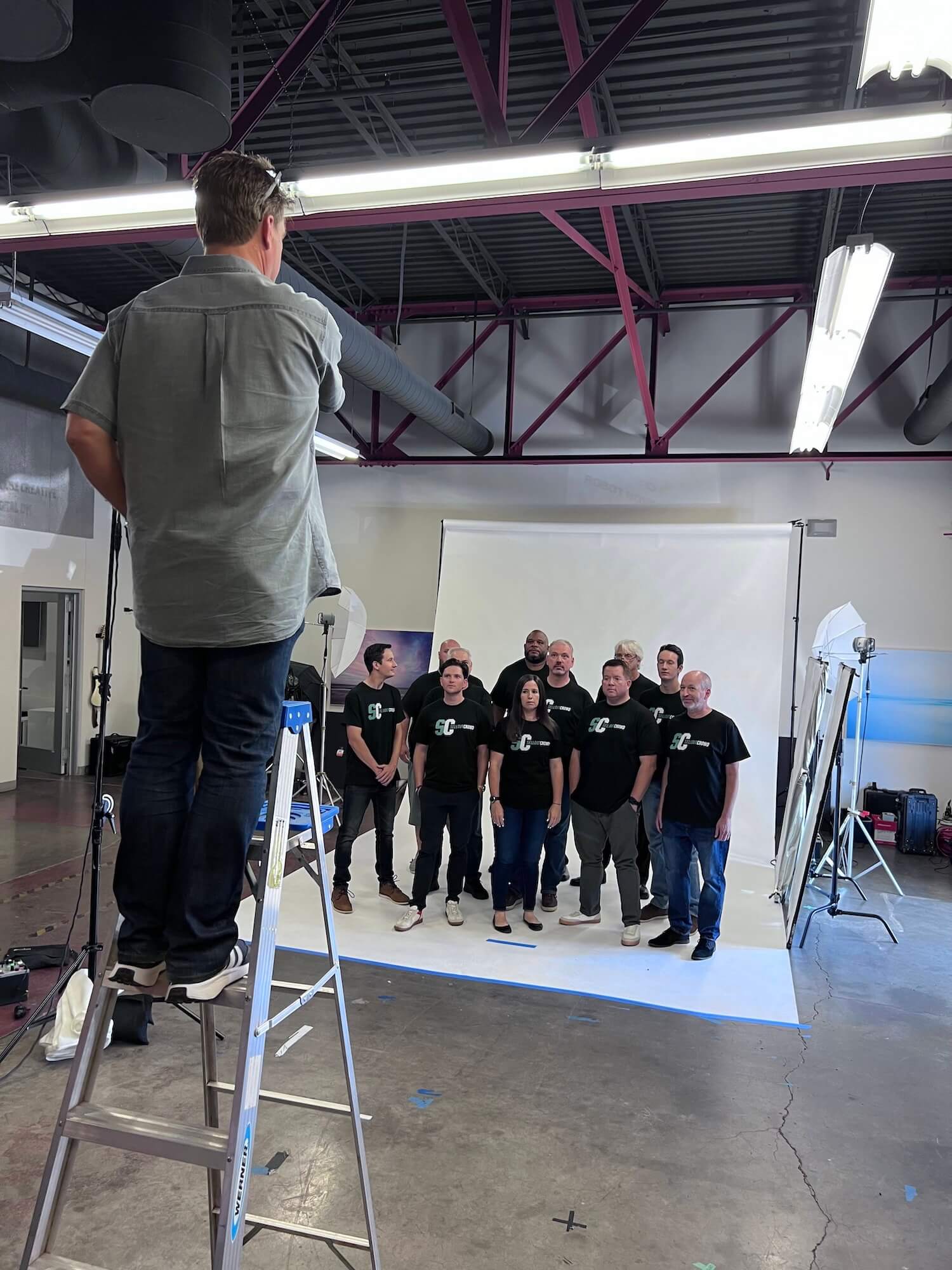
Oklahoma’s premier sports journalism team assembles for its promotional photo shoot in August 2023. (Photo: Jay Spear)
How would Sellout Crowd cover these stout salaries? Koehler had landed promises of dollars from big-time local figures: Toby Keith, the country music superstar; Bob Stoops, the former University of Oklahoma head football coach; and businessman Hunter Miller, the son-in-law of Barry Switzer, the legendary OU football coach. The collective was known as Big Dog Media.
Sellout Crowd was defined by relationships. The major investment behind it was no different. The two parties were introduced by Michael Carnuccio, a minority shareholder. But Carnuccio’s friend, Heath Kufahl, had a connection: Ryan Eshelman, who was family friends with Miller. And the latter was always looking for opportunities. The idea was sound, Kufahl thought. It was compared a little to Barstool Sports, the coarse, inflammatory online sports bro empire run by Dave Portnoy.
The first meeting between Big Dog Media and Koehler took place in July 2023 at Belmar Golf Club in Norman, which was owned (at least in part) by Keith. Koehler shared his pitch with Keith and Miller. “There was definitely interest on their side,” said Kufahl, who attended. Keith then urged Stoops’ participation.
“All the players involved, it was a no-brainer,” Keith said during the Sellout Crowd launch party livestream. “All of a sudden, we’re not just in the game, we are the game.”
There was enough money for Sellout Crowd to last three years, Koehler originally said. Still, Tramel was concerned about the hiring frenzy. He thought the site would start with a more humble staff: beat writers for OU, Oklahoma State, and the NBA’s Oklahoma City Thunder in addition to him, Sherman and Carlson.
“We built a big operations group up front and then hired a bunch of talented people, yes, but overpaid them because they hadn’t proven their ability to bring an audience, other than Berry and Jenni,” Spear, the consultant, said.
Every successful sports online journalism startup isn’t The Athletic or The Ringer. Most began with a mainstay shouldering the work: Will Leitch at the original Deadspin; Jason McIntyre at The Big Lead; Clay Travis at Outkick the Coverage. For them, expansion came in rivulets, not in a tidal wave of launch parties and billboard ads.
Most importantly, these creators operated in the real world. Koehler, Tramel lamented months later, “just wanted the confetti to fall on his head.”
‘Nobody is trying to screw you over’
Sellout Crowd debuted on Sept. 1, 2023. The final push came at a frenetic late-night launch from Sherman’s kitchen table, fueled by coffee and Little Debbie’s Oatmeal Pies as ABBA blared. (Sherman, Spear recalled, requested “Waterloo.”)
Oh, there were some good times.
The congratulatory podcast appearances, where Koehler smashed batting practice fastball questions. “What the heck have we done?” Carlson exclaimed to Koehler during the inaugural episode of “The Jenni Carlson Show.” “What is this, Mike?”
The glitzy party at The Joinery, where the “investors” received signed and framed Sellout Crowd jerseys.
But reality kept interfering.
The staff met for the first time on July 31, 2023. Work started right away, Emig recalled, but contracts took forever to finalize. “It was almost like, ‘Are we really going to do this?’” said Emig, who didn’t receive a final contract until late August. “That was problematic.”
For some who agreed to become part of Sellout Crowd, days passed without an update from Koehler. “Sometimes it’s nice just to say, ‘I don’t have anything new,’ as opposed to only telling us when there is something new,” Dawson, who signed on as the site’s Thunder beat writer, said. “There were people who were pretty committed to leaving their jobs.”
A Sellout Crowd staffer recalled asking Sherman for a job description. “None of us have job descriptions,” they were told.

Jenni Carlson, one of Sellout Crowd’s star talents, talks with Oklahoma City Thunder forward Jaylin Williams. (Photo: Jay Spear)
Many hires at Sellout Crowd were employees in name only. They were independent contractors doing full-time work, ineligible for health insurance or benefits and responsible for paying taxes. That wasn’t a significant concern given the good pay and brilliant opportunity. After all, adjustments were required at startups.
Some of those adjustments should have provoked skepticism. Three years’ upfront salary turned into just one year for Lisenbee. “We were all told different things,” he said. Yet they were making money doing what they loved; they were part of a fresh idea. “We thought maybe we were out in front for something with new technology,” Lisenbee said.
The final contracts had a new provision: Six months at Sellout Crowd were guaranteed, and content creators would receive three months’ severance if they were laid off or resigned.
That sounded OK to Hamm, the NBA salary cap expert, who had kept his day job in IT.
Then Koehler provided an update. “He told me that we were fully funded for the first year and expecting a cash flow after that,” Hamm said. “My first thought was, “OK, that’s not great to go from three years to one year to, ‘Maybe you’re out the door in six to nine months.’”
Dawson was told that if Sellout Crowd was sold, a la The Athletic to The New York Times, those not happy with the new ownership could leave with something. The clause protected everyone, Koehler said. Yes, there was money. “Nobody is trying to get you to leave your job and screw you over,” Koehler assured Dawson, who peppered his boss with questions.
“There’s part of me that just desperately, desperately wanted it to happen,” Dawson said.
‘Please let me know who your dentist is’
Like seawater entering the crevices of a hastily assembled ship, troubling omens dripped and pooled after the site debuted.
Koehler had hired a surplus of content creators, but not enough people to produce their podcasts and articles. That material needed music, show notes, fade-ins and -outs, graphics for social media promotion.
And the games never stopped.
“We got overwhelmed by the second week of existence,” said Lane, the site’s creative director. “There was no budget to hire another creative to help me. I was begging for that. It was too much for one person.” Content was reduced, but Lane basically worked 12-hour days. His weekends evaporated, thanks to college football coverage.

Sellout Crowd launched Sept. 1, 2023. Almost immediately, problems started. In this screenshot provided by another Sellout Crowd insider, Berry Tramel describes one: too much content.
But he loved it. The people were great and he was working in sports. “I’m watching the games anyways,” Lane said, “I just happen to have a computer in front of me.”
As for the cash flow Koehler bragged about, the site’s launch date made it difficult to secure advertisers. Most companies had reserved their ad dollars for 2023, though 2024 was in play, said Jerry Wagner, briefly director of advertising and marketing for Sellout Crowd.
Koehler’s mistake, Lane thought, was assuming a “content dream team” would draw sponsors in droves. Sellout Crowd was brand new. It’s much easier to sell a proven product, Wagner said, compared to, “Hey, it’s new and it’s going to be this.” And, Wagner noted, the Oklahoma City area is saturated with established media outlets, including TV stations, radio stations and The Oklahoman.
Then Kris Murray, the son of Ed Murray, the former longtime Channel 9 sports and news anchor, started overseeing sales at Sellout Crowd. (Tramel said Murray was Koehler’s business partner; Carnuccio said he was a shareholder.) According to Wagner, Murray wanted to follow the example of the NBA’s Oklahoma City Thunder. In October 2008, the freshly relocated franchise announced its “founding partners” — five local companies whose “support is vital” — shortly before the team’s first game.
Wagner felt that model wouldn’t work: There’s a world of difference between backing a media startup that covers an NBA team and the team itself. Wagner had 20 years of ad sales experience at The Oklahoman and Gannett. But Murray, who did not respond to requests for comment, felt he was too pushy with phone calls and emails, the unglamorous foundation of sales work.
When Wagner left Sellout Crowd in October, nobody stepped up. “We had no sales staff,” Lisenbee said.
“It changed every week, and (Koehler) stopped paying commissions,” Tramel said. “They stopped selling. We’d go a month without a sale. It was just nuts.”
Content creators were asked by Koehler and Murray to leverage their relationships for leads. One form sent to employees included prompts such as, Who’s your financial adviser? And, Who’s your dentist?
“Sort of how it was originally pitched was like, ‘We know where to go get the money,’” Hamm said. “And then it’s like, ‘Well, yeah, we know where to get the money, but please let me know who your dentist is so we can talk to them.”
In early 2024, Spear looked at sponsorship arrangements. He was appalled. Not only had companies agreed to lousy deals — showing up in one newsletter when the site had 10 — there was zero follow up. Did Sellout Crowd deliver on what it had promised? Sponsors didn’t know. They received no monthly reports.
“Man, the fulfillment sucked,” Spear said. “It aligns very well with Koehler making a bunch of promises and then sort of stepping backward. I don’t know what he was thinking.”
Meanwhile, the marketing strategies Sellout Crowd employed, like billboards, were done at The Oklahoman when Helsley was a sports writer there in the early 2000s “and it didn’t work then.”

Sellout Crowd’s high-profile rollout belied the company’s shaky financial foundation. (Photo: Jay Spear)
The “content dream team” only had so many Michael Jordans. Not everybody got podcast equipment. Not everybody received the same help. Hamm had lunch with Adam Coury, from sales, to explore sponsorship opportunities. Near the end, Coury admitted Sellout Crowd was focused for now on helping Tramel; Carlson; podcaster Sam Mayes, a former Oklahoma State University All-American; and Stoops, the Big Dog investor and former OU football coach, who hosted a podcast. Once that group was funded, so would the rest of the company.
“This would be a common theme,” said Hamm, who likened it to a sports franchise only devoting its attention to superstars. “It took me back a little bit, telling me where exactly I ranked.”
Added Spear, “It really came down to a financial issue of overpaying talent and then not having the sponsorship dollars to really support an ongoing version of this.”

Former Sellout Crowd employees say December 2023 was when payroll issues became obvious. But as this screenshot of a Slack announcement from Mike Koehler indicates, they started not even two weeks after the site’s launch.
Ask anyone who worked at Sellout Crowd when they first suspected something was wrong and you’ll hear a different anecdote. Koehler’s indifference provided the exasperating leitmotiv.
“He had no interest in running the business,” Tramel said. “He didn’t prioritize running the business or operating the business. Everything was about the launch.”
Spear saw Koehler’s interest wobble early.
“From the inception of this and the vision,” he said. “I saw him kind of pulling out and fading into the background within the first 30 to 40 days of the project.”
Spear thought he was alone in that experience. Of course he wasn’t. It’s just that “nobody,” he said, “was talking about it yet.”
‘Why didn’t they see this?’
This would have been the time to summon the lessons he had learned from his prior entrepreneurial anguish. Be forthright. Ask for help. Hand those burdens to God. Instead, Koehler carried everything.
“You could see the stress all over him — in his eyes, his tone, his reactions,” Lane said. His insecurity when faced with making decisions was palpable: Lane thought Koehler blurted stuff out just to be done with it.
Koehler cried when his vision became reality. Now, in the rare times he attended Sellout Crowd meetings, he looked withdrawn, distracted. His ideas were less than inspiring. We need a big guest. Has anyone tried Shams Charania? Sure, Hamm thought, The Athletic’s superstar NBA insider was going to waste his time with a 200-subscriber podcast.
“He was physically there, but he was not offering anything inspiring or constructive or, ‘Don’t worry about that, I’ve got it,’” Spear said. Whenever Koehler promised to do something, he said, it remained on the to-do list.
“It’s almost embarrassing to tell you all this stuff,” he added, “because anyone listening or reading about it would go, ‘What a bunch of idiots. Why didn’t they see this?’” The issues came in piece by piece, month after month. But they weren’t clear enough for Spear to leave.

Mike Koehler, the founder of Sellout Crowd, tried (and failed) to paint a sunny picture. “You could see the stress all over him — in his eyes, his tone, his reactions,” creative director Michael Lane said.
Meanwhile, in editorial, Dawson was covering The Thunder and loving it. Columnist Emig was finding joy in his craft. He was growing to love podcasting. Sherman, the director of content, was all about “surprise and delight,” said Lane: Give the audience something they don’t know they want to read. Every morning, Emig opened the site to find “reams of quality, nuanced content.” That joy never left.
The freedom that content creators were promised had limits. Lisenbee wanted to do off-the-beaten-path stories, but he was told to book more notable guests. He also got reprimanded for saying “ass.” Sellout Crowd was supposed to be different, but Dawson “felt very much like we were at a newspaper a lot of times.” Lisenbee noticed that, too. They were a team of individuals with individual websites, but Sellout Crowd operated like a sports desk.
Sellout Crowd touted its numbers in a sales deck, which a Sellout Crowd insider provided to Poynter. One slide, “The Big Shift: Old Media is Sinking,” featured an image of what looked to be the Titanic descending, with “Newspaper,” “Cable TV,” “Radio,” and “Broadcast TV” listed on the ship’s smokestacks.
In the first 90 days, according to the material, Sellout Crowd had garnered 15 years of online attention and 100 million pageviews.
Still, Helsley, a former journalism professor at Oklahoma State, felt the site didn’t distinguish itself from the pack.
“The quality of the writing was great,” he said. “They were doing some video, but everyone does video now. They weren’t doing anything different. I was hoping and anticipating different.”
Not that Sherman had time to be a visionary running an editorial department on his own. “He worked so much, that guy,” Lane said.
Nobody wanted to let anyone else down, Emig said, even as the company unraveled, weighted with problems that could no longer be dismissed as complements to ambition and pluck.
‘We’re just in a weird spot’
Dawson was told he’d travel for Thunder road games, a boon for readers sick of wire copy boilerplate on a talented, young team. He was reimbursed promptly for his first trip. After paying for two more trips without getting a dime in return, Dawson stayed home.
“That was the first real trouble for me,” he said.
Emig was only reimbursed for his first trip, OU football’s Sept. 23, 2023, win at the University of Cincinnati, and was trying to get money deep into the college football season. Maybe, he thought, there was a backlog.
In early December, Emig attended the Big 12 Championship Game in Ft. Worth, Texas, with Ben and Sam Hutchens, the twin brothers who covered Oklahoma State, and Carlson and Tramel. The topic of travel reimbursement came up. Everyone had the same problem. Emig was relieved — initially. The conversation became an “oh-shit-this-is-bad moment upon further reflection.”

Despite Mike Koehler’s reassurances, Sellout Crowd staff was rarely reimbursed for travel. When columnist Guerin Emig was laid off in March 2024, he was owed more than $2,100 in expenses. He has since been repaid.
Also that month, Spear’s pay was halved. He approached Koehler, who got teary-eyed and unleashed “a narrative” about a mistake he had made with payroll. “It really kind of limits your response, because he’s sitting there coming undone emotionally,” Spear said.
Anytime Spear came to Koehler with a hard question, he appeared uncomfortable. Whether this was stress bubbling to the surface or a manipulative stall, Spear isn’t entirely sure. But he knew the behavior was not indicative of a company founder.
December 2023 marked the turning point at Sellout Crowd. “We were so burnt out,” Lane said. The pace wasn’t sustainable.
Hamm was ready to make the leap to work full-time after the October launch party. He let Koehler know on Slack. Hamm received no response, but he did receive a message from Koehler on Dec. 15, payday.
“Hey, can you give me a call real quick?”
Hamm said Koehler asked if his payment could be delayed. “We’re just in a weird spot,” Hamm recalled being told. “I’ve got $100,000 in accounts receivable. I’m just waiting on some vendors to pay. There’s investor money we can’t touch until the first of the year.” Hamm, who still had his full-time job, agreed.
Things should return to normal next week, Koehler said.
The Christmas stretch was a wash. Afterward, Hamm followed up: “Hey, do we need to take a baseball bat to some vendors to get ‘em to pay up?” Nothing. A day later, an annoyed Hamm tried Koehler on Twitter. I’d appreciate an update on this.
Koehler finally responded. I can get you something next week — Jan. 2 or Jan. 3. Hamm never got paid.
In a Zoom call later that month, a group of Sellout Crowd employees learned their contracts were being torn up and redone. Forty-five minutes of avoiding the subject passed before Dawson, according to Hamm, interrupted.
“Are you going to terminate our contracts?”
In a conversation with Jacquelyn Farris, Sellout Crowd’s podcast video producer/network manager about a salary reduction, Murray had to beg Koehler to turn on his camera. When Koehler agreed, Farris said, he refused to look her in the face.
‘We’re idiots. We’re doofuses’
On Jan. 1, Koehler asked Sherman, Carlson and Tramel to meet him for lunch the next day.
They met at On the Border on Northwest Expressway in Oklahoma City. Koehler was a wreck, downcast and desperate. He stared at this plate. With tears in his eyes and his wife, Gaylee, holding his hand, Koehler shared his anguish: Kris Murray wanted control of Sellout Crowd — “He’s trying to take my company” — and wanted to make drastic changes.
Later, in his unraveling, Koehler said he was trying to keep Murray from taking his house. Tramel was confused. Did Mike sign a loan? Was he on the hook?
Tramel promised to help. After lunch, he called Murray, who then introduced Tramel to a new, deeper crisis. Sellout Crowd was not just in terrible financial shape, there was no investment from Keith, Stoops and Miller.
“Did you know,” Murray told Tramel, “there’s a loan and your name’s on it?” So was Sherman’s.
Tramel had been diligent about having his lawyer review all the Sellout Crowd paperwork. Then, Koehler offered Sherman and Tramel 2.5 shares each in the company. They were fine without it, but Big Dog Media, the quote-unquote investors, wanted it. The whole thing, which took place Tuesday, Sept. 5, 2023, was celebratory — hell, there were cigars. Carnuccio brought Perdomo Reserve for everybody. “I was so excited to be involved in such a new opportunity,” recalled Carnuccio, who also signed paperwork that day, and invited everyone to his office.
Among the documents Tramel and Sherman signed, Tramel said, one made them liable for repaying the loan.
The agreement was a doozy: A $1.5 million “construction loan,” which was not nearly enough money to sustain the company’s initial push, at 12% interest.
“As soon as he drew on the money,” Tramel explained, “he had to pay it back.”
Not only that, Big Dog Media held a 35% interest in the company. And it was nondilutive — the collective maintained its piece of ownership.
Carnuccio, an investor and minority shareholder, had brought Big Dog Media into the fold. Tramel and Farris say Carnuccio was the company’s money person, but he can’t explain what happened.
“At no time did I think anyone was signing anything that they weren’t aware of what they were signing, but that’s in part based on what we were told as investors and shareholders about how everything was put together and how the deal was going to close,” Carnuccio said.
Carnuccio, Tramel recalled in late September, knew what the documents were, but “he thought we knew. Koehler told him he had briefed us on everything.”
He called Koehler “the crook.”
As for Tramel and Sherman? “We’re idiots,” Tramel said. “We’re doofuses. That’s on us.”
Tramel thought Koehler could help the company get out of this mess. Murray transitioned to CEO and instructed Koehler to find investors and advertisers. But by late February, Murray was through with Koehler.

By late February 2024, Kris Murray, now Sellout Crowd’s CEO, was through with the site’s founder, Mike Koehler. “Literally every day a new bill comes in that I don’t know anything about,” Murray told Berry Tramel.
“Literally every day a new bill comes in that I don’t know anything about,” Murray told Tramel. The billboard people. The folks who took the promotional photos. Each time, Koehler swore the newest bill was the last. Tramel later learned Sellout Crowd owed $285,000 in unpaid bills, staffers’ expenses and backpay.
Murray told Tramel it was either him or Koehler. At that moment, Tramel realized Koehler couldn’t help anymore.
That Sunday, Feb. 25, Tramel and Murray met Koehler at the Starbucks on NW 23rd and Broadway. They sat outside. It was a nice, warm evening. Murray delivered his ultimatum. Koehler looked panicked.
“He’s been honest with me,” Tramel said, referring to Murray. “You haven’t. You’re out.”
Koehler broke down and started “talking some nonsense,” Tramel said. Murray and Tramel eventually departed, leaving the would-be savior with nothing but his head in his hands.
It was over in 34 minutes, “which was about 30 minutes too long,” Tramel said. He was aware of the time. His wife, Tricia, had waited in the car. They had stopped after their granddaughter’s softball game.
“How’d it go?”
“It was pathetic.”
Days after he was removed from the company he founded, Koehler messaged Spear. He wanted to meet about a new idea.
‘Maybe, just maybe, a miracle would come through’
In March, most employees became numbers on a spreadsheet. The Hutchens brothers, Eli Lederman (who covered the University of Oklahoma), Hamm, Emig, Dawson and Lisenbee were laid off. There was no three-month warning and certainly no pay to go with it. Employees received only half pay on Feb. 15.
From Sellout Crowd’s coworking space at Vault 405 in Edmond, Murray read the sad news from a script. Sherman hopped in his Subaru Outback. He wanted to make sure the other unlucky souls heard from a person. Sherman met the Hutchens boys, the baby-faced OSU writers, at Stella Nova in town. The three of them cried. He then drove about 50 miles to a Starbucks in Stillwater and left Emig to navigate an all-too-frequent crisis. The columnist had now been laid off twice from journalism jobs in 18 months. He was in his mid-50s. What was he supposed to do now?
It was survival time. The terms of the loan were onerous, but there was a way out — if Big Dog Media, the collective of Keith, Stoops and Miller that originally issued the $1.5 million loan, agreed.
Local financial advisers proposed diluting 35% of the company, the original amount owned by Big Dog Media. Sellout Crowd would sell shares, find investors. Big Dog Media was owed $600,000. If everything went according to plan, Tramel said, Big Dog Media would get $900,000, and continue to own a piece of Sellout Crowd.
The new plan was presented to the lenders. Miller, Tramel said, vetoed it.
(Miller could not be reached for comment. Keith died in February at the age of 62; Stelen Covel, Keith’s son and business partner, did not respond to requests for comment. Through the United Football League, where he coaches the Arlington Renegades, Stoops declined to be interviewed.)
Now Sellout Crowd needed a minimum investment of $1 million, Tramel said. That would settle the loan with Big Dog Media and the $285,000 pile of IOUs while giving the startup a welcome mat-sized patch of runway.
The site was still active. Investors wouldn’t be interested in an inactive one, but was it worth their while? Carnuccio, who tried to help find investors, believed Sellout Crowd was an attractive opportunity. “A lot of venture companies are going to be volatile in their first year to 18 months,” he said.
Carnuccio believed in the site and its people. It offered stars like Tramel and Carlson. Changes had been made, including Murray running the show. But there was only 59% of the company for prospective investors, Tramel said, “who would have to pay high rates to be partners with lenders who did not invest anything (in theory, at least) to get 41%.”
Big Dog Media did show some leniency, agreeing to let Sellout Crowd only pay the loan’s interest for three months, starting in February, in exchange for another 6% ownership going to Covel. The $76,000 monthly principal payment was crippling; that number was close to the monthly budget, Tramel said. (According to a lawsuit from Big Dog Media, Sellout Crowd paid $75,884.16 on Dec. 13, 2023, and $78,849.14 on Dec. 31, 2023.)
That meant the end of April was the deadline. “We kind of knew that we had this terminal illness, but maybe, just maybe, a miracle would come through,” Lane said. Tramel joined the rescue mission. Sellout Crowd approached at least two potential angel investors, according to Tramel and Farris: state representative Jon Echols and Seth Wadley, who owns a chain of car dealerships. Both declined.
“The only investor we ever found to actually say, ‘Here you go, here’s some money,’ was at the very end, with the agreement that Big Dog just wanted its money back and would walk away,” Tramel said via email. “But that’s not even for certain.”
The fate befell Sellout Crowd that has forever hobbled startups, Carnuccio said: It ran out of time.
On May 10, at the Oklahoma City Thunder’s practice facility, Tramel and Sherman participated in a conference call with the remaining staff. The last possible investor, Murray said, had fallen through. Sellout Crowd was dead after eight months.
“The question is not how we failed,” Tramel said. “The question is how we succeeded at the level we did.”
The only silver lining
The institutional rampage Mike Koehler wanted to protect journalists from was unleashed inside his own house. He promised to give reporters a better life. Instead, they say, they were stiffed thousands of dollars.
“The only silver lining was we got to work with each other for six cool months,” Guerin Emig said. “The camaraderie and the pride we took in doing the work as a group, it was nice. It really was. But it’s completely sabotaged by all the other stuff.”
Jay Spear is owed about $7,000. He’s dipped into savings. Todd Lisenbee, $3,500; though it’s closer to $20,000 because he didn’t get a three-month warning before his layoff. The loan from Big Dog Media dangles over Mike Sherman and Berry Tramel, who went without pay for almost three months to keep Sellout Crowd alive.
“It’s been almost six months of hell,” Tramel said in June. On July 30, he, along with Sherman, Koehler and Kris Murray, were sued by Big Dog Media for the $600,000 in unpaid principal and interest on the loan. Attorneys representing Big Dog Media in the lawsuit did not respond to email requests for comment.
“Me and Sherman are journalists,” Tramel said before the lawsuit was filed. “They think we got $600,000 laying around?”
In September, Tramel and Sherman each filed a counterclaim to Big Dog’s lawsuit. The members of Big Dog Media, a footnote in Tramel’s counterclaim reads, “effectively … lent money to themselves, failed to repay it, and in the meantime obtained Personal Guarantees from individuals with no equity in the company, no responsibility for its successful day-to-day operations, and who financially could never have been expected to guarantee the Note successfully in event of a primary default.”
They’re asking for more than $75,000, which includes legal fees and “any and all relief” they may be entitled to under Oklahoma law.
Sellout Crowd felt like a scam, Lisenbee said, because Koehler preyed on “the emotions of people he knew were in the industry and knew the desperation of people working in that industry.” But, Sam Hutchens said, “It’s easy to be duped when you want something to work so badly.”
When the Sellout Crowd website was still up, Spear said, it hurt to look at what might have been.
Some former staff members are finding a new professional life. Tramel is now a columnist at the Tulsa World. Eli Lederman, the young sportswriting talent, landed at ESPN. Michael Lane has made resumes and helps with Jenni Carlson’s show. “I’m trying to extend a helping hand to every one of those people who I know have been so wronged,” he said. In June, Jay Spear was monitoring Sellout Crowd’s various channels, salvaging staffers’ contributions and providing advice.
“When it comes to helping my friends,” he said. “I’m all in.”
Koehler declined to be interviewed for this story. He now works at the National Cowboy and Western Heritage Museum in Oklahoma City, which is more concerned with preserving and interpreting history than saving the future. Koehler has been seen drinking from a Sellout Crowd coffee mug.
What does that memento represent? That’s a story only he can choose.
Correction (Oct. 16): A photo above shows Jaylin Williams, not Shai Gilgeous-Alexander.



